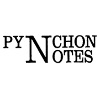Abstract
In Sir Thomas Browne, asserts F. L. Huntley, "one finds three great nourishers of the mind and heart of man: religion, poetry, and science. They met in the seventeenth century and may be coming together again in this mid-term of the twentieth" (Browne vii). In Thomas Pynchon, who began his studies at Cornell in engineering physics, we find an exploration of these same three themes, begun in his first novel, V. (1963), and continued in The Crying of Lot 49 (1966) and Gravity's Rainbow (1973), Like Browne, pynchon is interested in the poetic expression of the "twin themes of scientific research and religious exploration" (Green 7). Paul Ricoeur (among others) has shown that the dialectic which arises out of such a dual interest is the same which characterizes the history of Western religions. The poles of this tension are found in the appearances of the sacred and the interpretation of the Word (Ricoeur 13). The "hermeneutic of proclamation" first gained ascendancy over the "phenomenology of the sacred" in Judaism, and this pattern was subsequently embraced by Christianity and Islam. Within the dialectic the revelation of the Word is concretized with "the support and renewing Rower of the sacred cosmos and the sacredness of vital nature" (Ricoeur 35). Four important similarities, each arising from this problematic, link the work of Browne and Pynchon.
How to Cite:
Irwin, M. T., (1988) “Hieroglyphs of Revelation: Thomas Browne and Thomas Pynchon”, Pynchon Notes , 47-56. doi: https://doi.org/10.16995/pn.315
Downloads:
Download PDF

